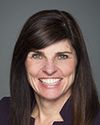We have some contact with the U.S., but our environment is quite different from theirs. They have a very unique decentralized structure, whereby, if I'm not mistaken, 60% of the districts or jurisdictions that serve electors in the U.S. are less than 5,000. It's a constellation of micro-jurisdictions with, in some cases, very varying means to deal with threats. They also need to rely on technology a lot more than we do in terms of voting because of the nature of their system. They often have referendums and so forth. They typically don't vote on paper the way we do. Their challenges are quite unique in that regard.
Evidence of meeting #98 for Procedure and House Affairs in the 42nd Parliament, 1st Session. (The original version is on Parliament’s site, as are the minutes.) The winning word was pps.
A recording is available from Parliament.




